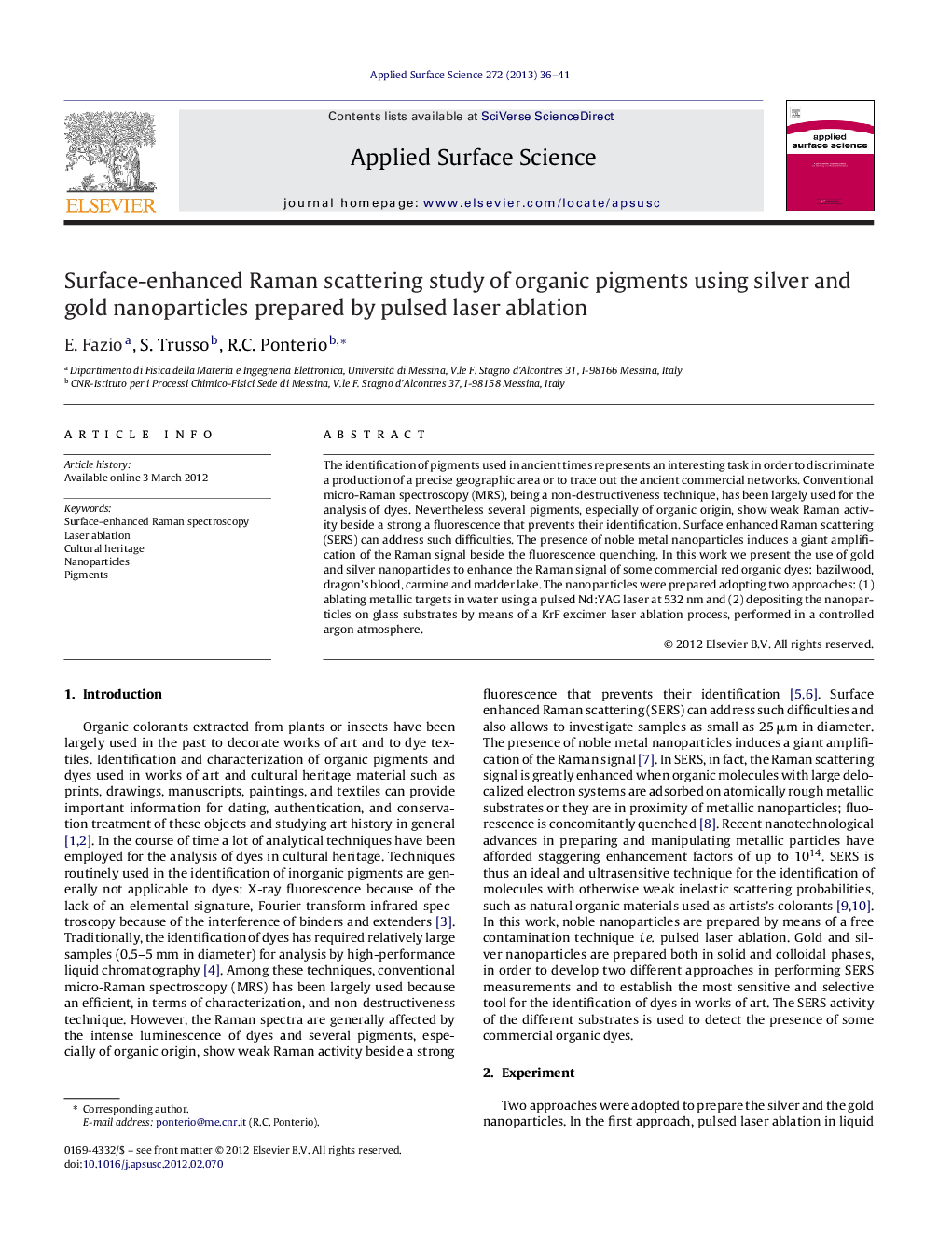| Article ID | Journal | Published Year | Pages | File Type |
|---|---|---|---|---|
| 5354964 | Applied Surface Science | 2013 | 6 Pages |
Abstract
The identification of pigments used in ancient times represents an interesting task in order to discriminate a production of a precise geographic area or to trace out the ancient commercial networks. Conventional micro-Raman spectroscopy (MRS), being a non-destructiveness technique, has been largely used for the analysis of dyes. Nevertheless several pigments, especially of organic origin, show weak Raman activity beside a strong a fluorescence that prevents their identification. Surface enhanced Raman scattering (SERS) can address such difficulties. The presence of noble metal nanoparticles induces a giant amplification of the Raman signal beside the fluorescence quenching. In this work we present the use of gold and silver nanoparticles to enhance the Raman signal of some commercial red organic dyes: bazilwood, dragon's blood, carmine and madder lake. The nanoparticles were prepared adopting two approaches: (1) ablating metallic targets in water using a pulsed Nd:YAG laser at 532Â nm and (2) depositing the nanoparticles on glass substrates by means of a KrF excimer laser ablation process, performed in a controlled argon atmosphere.
Related Topics
Physical Sciences and Engineering
Chemistry
Physical and Theoretical Chemistry
Authors
E. Fazio, S. Trusso, R.C. Ponterio,
